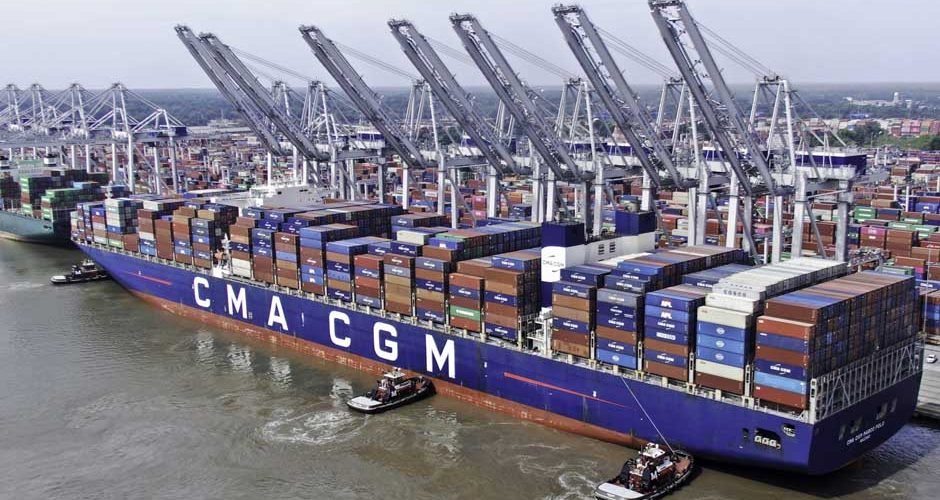Port services play a pivotal role in facilitating global trade and are vital for the economic growth of nations. As gateways connecting land and sea, ports serve as crucial hubs for importing and exporting goods, creating employment opportunities, and stimulating economic development. However, behind the scenes, there are complex economic and financial considerations that shape the operations and viability of these ports. Understanding the intricacies of port economics and finance is essential for optimizing port services and fostering sustainable growth.
Table of Contents
Overview of Port Economics
Port economics encompasses various factors that influence the functioning and impact of ports on economies. It involves analyzing the relationship between port activities and economic growth, as well as understanding the concept of port hinterland, which refers to the areas connected to a port and its trade network. The economic significance of ports lies in their ability to facilitate trade, attract investments, and generate employment. Ports act as engines of economic growth, driving regional development and stimulating related industries.
Port Pricing and Revenue Generation
Port pricing is a critical aspect of port economics and finance. Various factors influence port pricing, including infrastructure costs, labor expenses, and market competition. Ports employ different pricing models to meet their financial goals while remaining competitive. Tariff-based pricing involves setting charges based on the type and volume of cargo handled. Volume-based pricing offers incentives for high cargo volumes, while revenue-sharing agreements distribute revenue among stakeholders. Striking the right balance between competitiveness and revenue generation is crucial to ensure sustainable port services and to attract shipping lines and cargo owners.
Cost Management and Efficiency
Efficient cost management is essential for the financial sustainability of port services. Ports face various costs, including labor, energy, maintenance, and administration. To optimize costs, ports must implement strategies such as process improvements, technology adoption, and effective resource allocation. By enhancing operational efficiency, ports can streamline processes, reduce expenses, and improve profitability. Automation and digitization play a significant role in increasing productivity and reducing costs. Additionally, collaboration among stakeholders, including port authorities, terminal operators, and logistics providers, can lead to shared benefits and cost optimization.
Public-Private Partnerships (PPPs) in Port Development
Public-Private Partnerships (PPPs) have emerged as a popular model for port infrastructure development. In this approach, governments collaborate with private entities to design, finance, build, and operate port facilities. PPPs offer advantages such as risk sharing, access to private sector expertise, and accelerated project implementation. By leveraging the strengths of both public and private sectors, ports can benefit from increased efficiency, innovation, and improved financial viability. Successful examples of PPPs in port development demonstrate the positive economic impact that can be achieved through effective collaboration.
Port Investment and Financing
Port projects require substantial investment, and securing financing is a critical aspect of port economics. Funding sources for port projects include government funds, private investments, and support from international financial institutions. Feasibility studies, risk assessments, and cost-benefit analysis play a crucial role in attracting investment. Public funding is often used to develop essential infrastructure, while private investments are sought for terminal operations and ancillary services. Additionally, emerging trends in port financing, such as green financing and sustainable investment practices, align with the growing emphasis on environmental and social responsibility.
Economic Impact and Indicators
Measuring the economic impact of ports is a complex task, involving the evaluation of direct and indirect effects. Ports generate numerous economic indicators that demonstrate their contribution to the economy. Employment rates, both directly and indirectly linked to port activities, reflect the job opportunities created by the port sector. Trade volumes indicate the level of import and export activities facilitated by ports, showcasing their role in international commerce. The GDP contribution of the port sector reflects its significance as a driver of economic growth. Furthermore, ports have multiplier effects that extend beyond their immediate operations. These multiplier effects refer to the indirect economic benefits that arise from port activities, such as increased business activity in the surrounding areas, growth of related industries, and improved infrastructure development. Ports can act as catalysts for regional development, attracting investments, and stimulating economic diversification.
Case studies showcasing the positive economic outcomes resulting from port investments further highlight the significant role ports play in driving economic growth. For instance, the expansion of a port can lead to increased trade volumes, attracting more businesses and creating a ripple effect throughout the supply chain. The development of port-related industries, such as logistics and warehousing, generates employment opportunities and enhances the overall economic ecosystem.
Conclusion
Port economics and finance form the foundation for sustainable port services. By understanding the intricate relationship between economic considerations, pricing strategies, cost management, and investment, ports can navigate the challenges and seize the opportunities in the ever-evolving global trade landscape. With sound financial management and strategic decision-making, ports can fulfill their role as engines of economic growth, fostering prosperity for nations and enabling efficient and reliable global supply chains.
As global trade continues to evolve, it is imperative that ports embrace innovation, sustainable practices, and collaborative partnerships to remain competitive and contribute positively to their respective economies. By prioritizing economic and financial aspects, ports can unlock their full potential and serve as catalysts for economic development, ensuring the provision of efficient and resilient port services for years to come.
To achieve this, ports must continue to invest in their infrastructure, leverage technology to enhance operational efficiency, and forge strategic partnerships with public and private entities. Furthermore, adopting sustainable practices, such as green port initiatives and responsible financing, will not only contribute to environmental preservation but also attract socially responsible investors.
In conclusion, the economic and financial considerations in port services are crucial for the sustainable growth and development of ports. By focusing on optimizing port pricing, managing costs efficiently, fostering public-private partnerships, attracting investments, and measuring the economic impact, ports can become thriving economic engines that support global trade and stimulate regional economies. With careful planning, innovation, and collaboration, ports can continue to adapt to changing trade dynamics and play a vital role in shaping a prosperous future for nations around the world.





